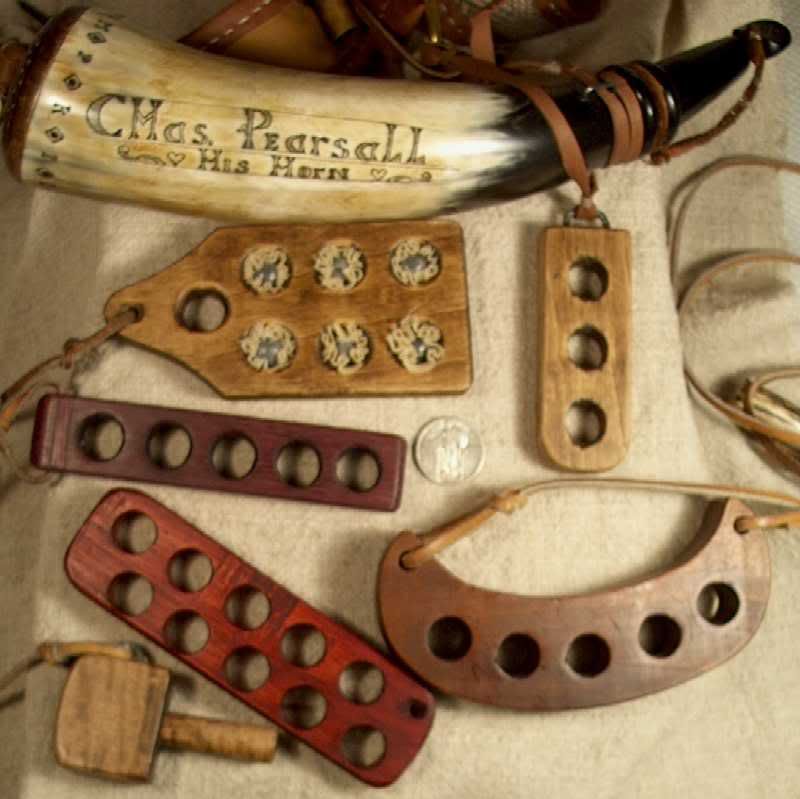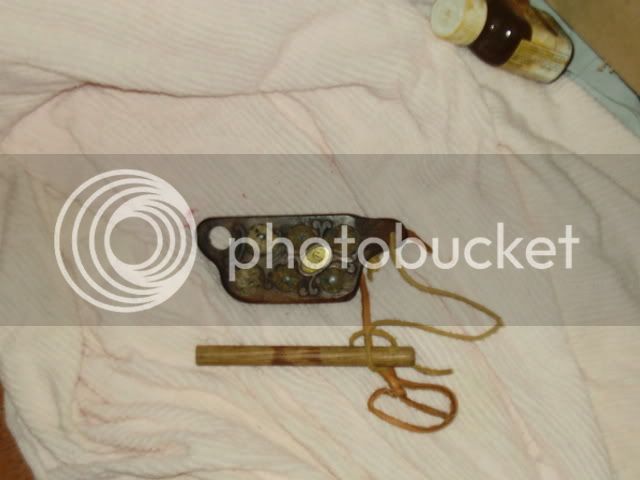BrownBear: I agree. :thumbsup:
Most shooters make, or buy a ball block before they ever go hunting. Or they see someone in a Seneca Run shaving seconds off his time because he is using a loading block to aid his loading his next PRB. The shooters almost always buy or build a block that holds way too many balls than are ever needed, and have to carry that thing around all day, whether they shoot or not! If its hung around the neck on a thong, as is often seen on Seneca Runs, it can leave you with a very sore and cramped neck at the end of a day.
Obviously, the caliber of the ball makes a big difference in the amount of weight you are going to have hanging from your neck. I don't see too many ball blocks made for .32 or .36 caliber balls. Even .40 ball blocks are rather rare to see. Most are for .45, .50, .54, .58, and occasionally for a .62. I did see one for the .69 caliber ball, but he was shooting against a lot of men who were shooting minie balls, and paper cartridges, so he was quite " different", on the line.
Choose your wood well. Not only do the holes need to be separated so they don't interfere with your loading operation by having the ball next to the one you are trying to load hit the side of the muzzle, but you also need to have enough distance between the holes so that the wood between them does not break out. Some soft woods, like pine, do not hold up well, and can break out after drying over a winter in a warm, dry house.
I recommend choosing some hardwood for the ball blocks. Maples work, but so do walnut, birch, poplar, oak, ash, hickory, and the foreign exotics. Some men make the blocks with a handle on it. I think it adds unnecessary length, and weight I don't want to carry, but to each his own, no?YOU can stain the block any color you want, and finish them, or not, as you desire. Some blocks are ornately carved, or chip carved, by their owners. You see a lot of different kinds of ball blocks from the 19th century, and they tend to be as individual as the shooters were. The tighter the grain, the easier it is to do tight carving.







